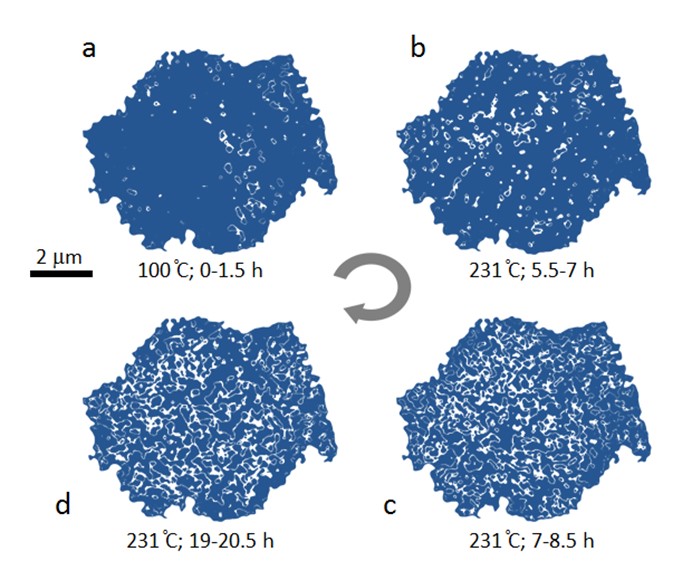
An international research team has used the synchrotron based nano-scale spectro-microscopy technique to visualize the thermally driven propagation of a reaction front in charged.
They developed a numerical model to describe the dynamic behavior in highly inhomogeneous polycrystalline particles, and concluded this methodology is applicable to redox phase transformations far beyond battery systems that are polycrystalline in nature.
In a paper published in Nature Communications, the team introduced the concept of reaction surface and local valence curvature, and applied this methodology, the nano-scale spectro-microscopy technique, to lithium ion battery NMC materials.
The team consisted of scientists from the Beijing Synchrotron Radiation Facility at the Institute of High Energy Physics (IHEP) of Chinese Academy of Sciences, the Stanford Synchrotron Radiation Light Source at SLAC and Virginia Tech.
A lithium ion battery is a dominant energy storage device that can be utilized in consumer electronic devices and electric vehicles, both of which have tremendous market potential. While great efforts from the research community have been devoted to improving electrochemical performance, safe operation is a vital aspect that needs to be considered more seriously. It is, therefore, of practical and fundamental importance to investigate the response of the battery electrode to elevated temperature.
Under thermal abuse conditions, the battery electrodes undergo very sophisticated interplay over a wide range of length scales. At the secondary particle level, due to the preexisting structural and chemical complexity, the thermally driven heterogeneous material phase transition is a phenomenon that is not well understood.
This team used the proposed technique to visualize thermally driven propagation of the reaction front in charged (NMC) particles, and conducted in-situ observations of the particles upon heating, providing details about the phase transition.
The implementation of their method not only reveals the heterogeneous phase transformation, caused by thermally driven oxygen release, in an NMC battery electrode, but also can potentially provide a universal approach to study phase transformation behaviors in battery materials and beyond.

The development of the Ni reduction reaction front upon heating (Image from the paper)

86-10-68597521 (day)
86-10-68597289 (night)

86-10-68511095 (day)
86-10-68512458 (night)

cas_en@cas.cn

52 Sanlihe Rd., Xicheng District,
Beijing, China (100864)

